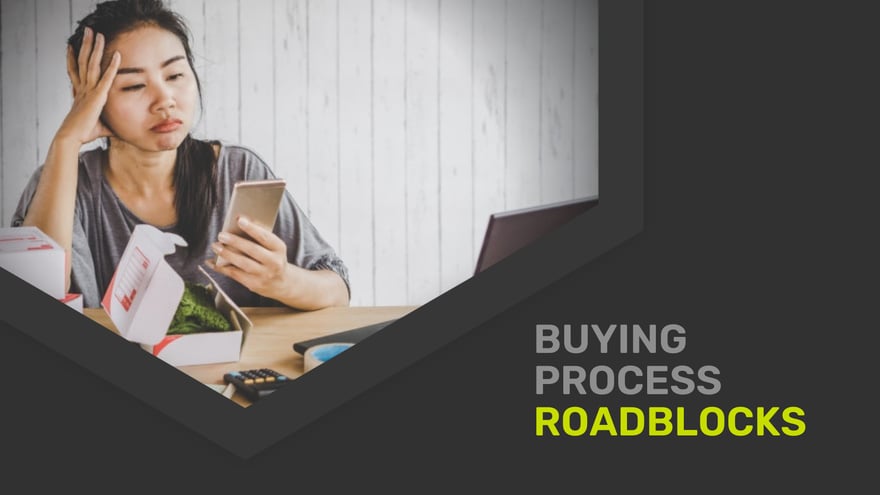 In the world of e-commerce, the buying process can be complicated and tricky. In the digital age, there are so many steps from a customer’s initial discovery of a product, to the final checkout, and a thousand experiences along the way that can influence their decision to purchase.
In the world of e-commerce, the buying process can be complicated and tricky. In the digital age, there are so many steps from a customer’s initial discovery of a product, to the final checkout, and a thousand experiences along the way that can influence their decision to purchase.
Simply having a digital sales platform isn’t enough. Online, it can be easy to unknowingly create barriers for your customers. Customers have higher than ever expectations when it comes to their experience shopping online. The events of 2020 made huge waves across all industries, and when it comes to e-commerce, those changes are likely permanent. It takes a bit of innovation and forward thinking to streamline the process and create the optimal user experience for your customers.
The goal for your digital buying process should be simplicity and an enjoyable website interface. And we’re not just talking about retail-based companies. This applies to service-based industries as well. No matter what you do, or what you sell, there is always a way to level up.
Let’s break down some of the biggest user experience roadblocks that can arise in the buying process, and our recommended strategies to spruce up your website.
Is your load speed fast enough?
There’s no other roadblock quite as frustrating for a customer as a slow website. We’ve all been there. It seems like as our technology improves, our patience thins, and customers are more likely to click away with every second of load time. This roadblock has a few factors: your hosting platform, and obviously the user’s internet connection, but there are ways to optimize load speed. Make sure your images are compressed and continually perform speed checks to make sure things are working quickly.
How many clicks does it take?
If it’s difficult for a customer to hand over their money, then you might have a problem. If your customer can’t easily give you their information, create an account, or anything else you need to capture that lead, not only does the process become complicated for your customer, but for your sales team as well. Are you unintentionally blocking pathways to sales? Look at your website through the eyes of a customer seeing it for the first time. Can they quickly navigate to a CTA banner or landing page form? How many clicks does it take from your homepage to the checkout page? Ask yourself these questions.
Are you fully optimized?
It’s pretty likely that your customers are buying from you on mobile. In 2021, over 50% of all e-commerce is expected to be conducted on our phones. Everyone has some form of mobile website version by now, but oftentimes it’s an afterthought to the main desktop site. But as the stats show, your mobile interface is equally, if not more important. Make sure your site looks and performs well in a mobile layout. Run all the typical checks and audits you would on a desktop. In that same vein, make sure your images are optimized for every device, and are the correct size and layout in every view. A seamless and polished look can be the difference between earning a customer’s trust, or adding to your bounce rate.
Are your offerings unclear?
If you’re not selling physical products, it’s crucial to make sure your offerings and services are crystal clear. A lot of business-service based companies will have a difficult time demonstrating what they’re offering, and why it’s distinct. If customers have to spend too much time clicking around on your website, just to find out what services you’re selling, why would they bother sticking around, or filling out a landing page form? More than likely, if your website is a Where’s Waldo puzzle, they’ll just go somewhere else.
So what can you do?
If you’re feeling stuck in a rut with your website, get another pair of eyes on it. Have someone objective and experienced evaluate where your digital experience is lacking and how you can improve your user experience. You can also take a look at websites you love visiting and brands that make it easy to purchase online, and take notes on what they do flawlessly. See what you can implement on your own website. Streamlined buying channels and a variety of avenues to collect information are a good place to start. Make it easy for your customers.
Lay out your offerings plainly and clearly. Don’t keep your clients guessing or wondering if you’re the company for them. Pages with clearly detailed services make it easy for customers to learn about you and eventually “add to cart.” Even more straightforward, offer a ‘menu’ of services.
Bundles, subscriptions, retainers, add-on offers, or other features will fundamentally improve the user experience for your customers. And if you invest in video, you’ll give your customers the most engaging way to get to know your brand.
In the digital landscape, removing these potential roadblocks to the user experience helps you land sales and loyal customers. If they love the ease and seamlessness of your buying process, they’ll come back. If they have to click through 10 windows to see what you offer... maybe not.
If you’re ready for a digital marketing overhaul, give us a call. We’ll help you look for ways to streamline and improve.

